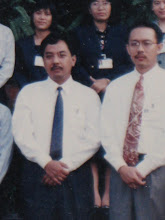It’s good to visit a friend and be greeted with a firm handshake and words of welcome. If that is the way people greet one another in your country. However, there is often a meaning for a greeting and in any country there is usually more than one from of greeting.
.
If you were to go to Zambia, for example, you would find that each tribe has different greetings. Imagine that you are visiting the Barotse tribe. A Tribesman would take your hand and kiss the palm and you be expected to do the same to his hand. After both of you did this three times, this being the first time you had met. If you had been friends for a long time, the clapping of hands would continue for a longer time and you would be expected to clan your hands at the same time.
If you visited to the Kaonde tribe in the same country, you would be greeted with a handshake. But not the usual handshake. In this tribe, two people when greeting each other, clap hands three times and then shake hands quickly. The Sala tribe also has a different sort of handshake. Here you must first shake hands, then grip thumbs, then sake with the full hand again. For this greeting you must perform these three movements quickly, imagine if you had to greet a lot of people, in this way at the same time.
In South America, The Greeting is the handshake, but everyone seems to be always shaking hands. The handshake has become a part of everyday life. Even if you meet a friend for a short time in the street, you meet and part with a handshake. People with smiling faces and friendly gestures, as well as the handshake, make you very welcome everywhere in South America.
In almost all parts of the world the embrace is widely used, even among the people from Andaman Islands and from Terra del Fuego (In Chile), and among the aborigines of Australia, in Pakistan you will find the handshake, but men welcome each other by hugging.
If you travel east to the oriental countries, you will be greeted with graceful how. The people want to make you feel very welcome. After the usual how, the people want to make you will enter the home, leaving your shoes at the door. And sit on a mat on the floor. That you will be given a cup of tea. Certainly this welcome, and the friendly smiling faces, will be remembered.
Giving Kisses on the cheek has been a greeting for a long time. In some a greeting for a long time. In Some countries only women greet each other in this way. In Syria, the men also greet each other in this way but sometimes they will grasp one another by the shoulders and without kissing, place the head first over one shoulder and then over the other.
Not every countries uses kissing as a public greeting. In China and Japan it is not polite to kiss in public. Among the Maoris of New Zealand, kissing in public is replaced by the custom of pressing noses.
In Some countries a physical greeting is no longer used it is replaced with words only. The Austrian greeting Kuss d’hand means “I kiss your hand” but actually your hand is not kissed. The Spanish also use the greeting is only spoken, in the past. The Spanish really kissed the hands of a friend as a greeting.
There is a belief that you can know the character of a person by his way of greeting. Indeed, greetings are words and acts that are customary but they also show your friendship or love. With a greeting, you can make the people who meet you feel very happy.
GEOGLOBE
Wednesday, April 8, 2009
Various Forms of Greeting
Subscribe to:
Comments (Atom)








